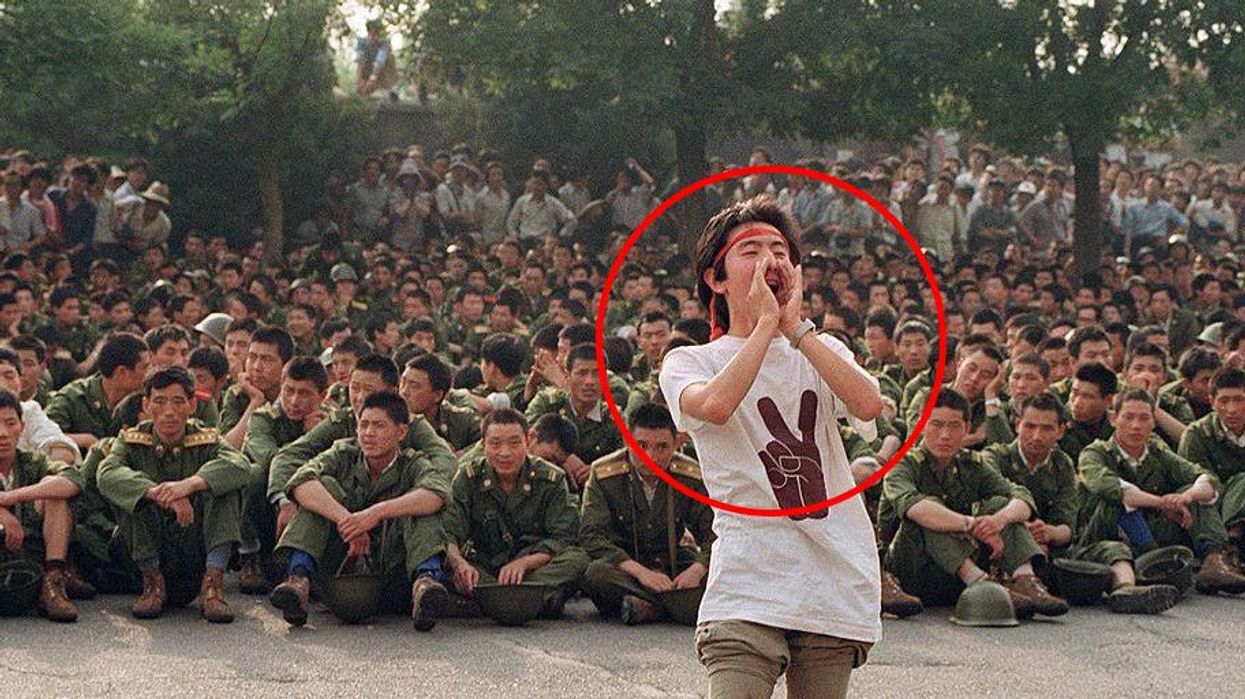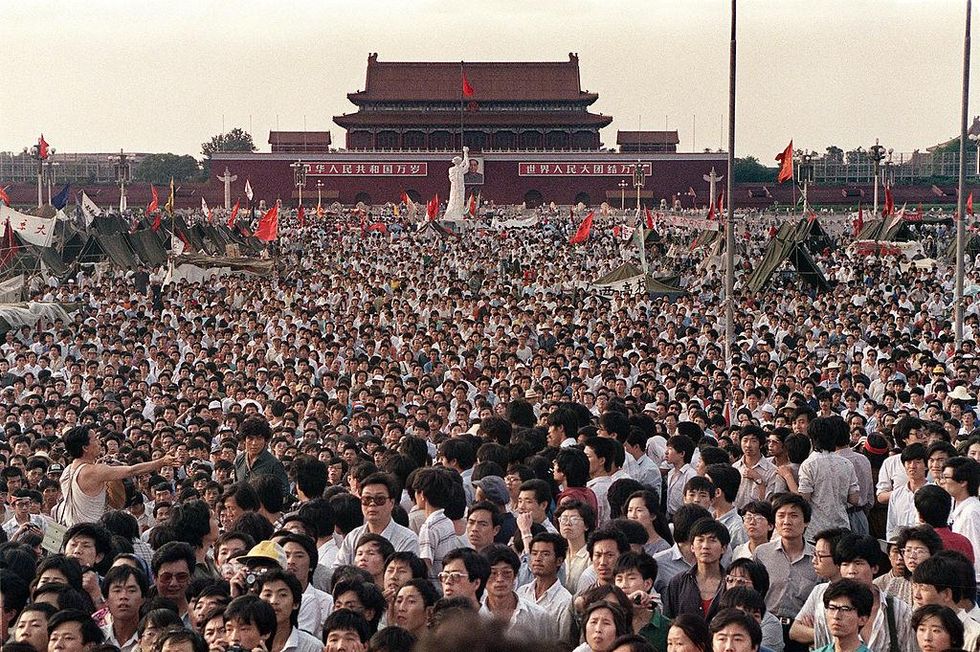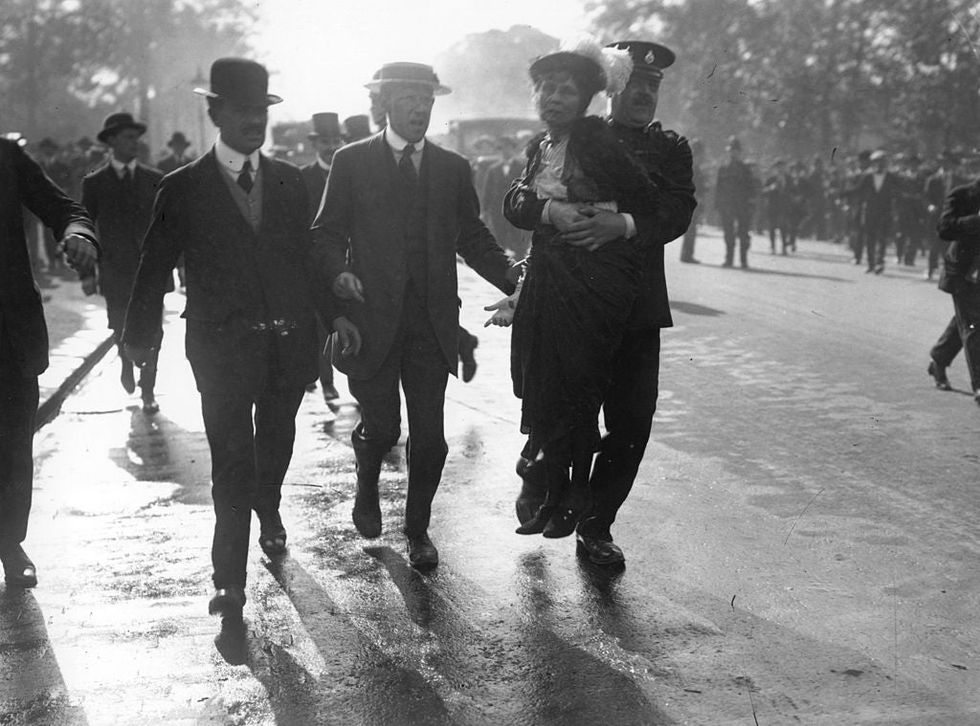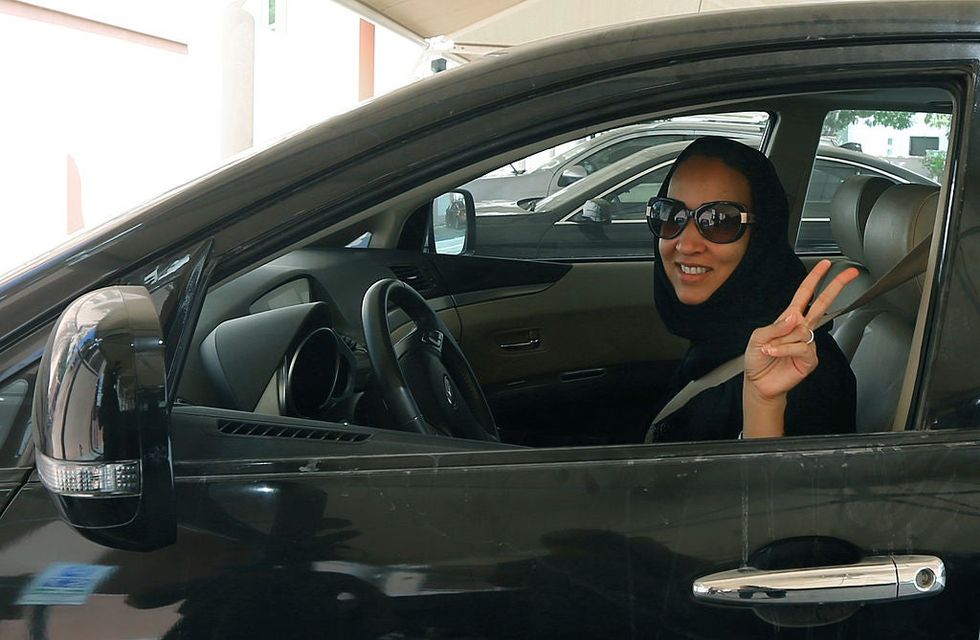News
Joe Vesey-Byrne
Jun 01, 2017

Picture:
3 June 1989: A dissident student asks soldiers to go back home. PICTURE: CATHERINE HENRIETTE/AFP/GETTY IMAGES
'Tank Man' is one of the most well known images in the world (outside of China, where only 1 in 10 students are able to identify it).
On 4 June 1989, an anonymous man stood in front of a tank in Tiananmen Square, China.
The Associated Press credits the image to Jeff Widener.
It was taken on what would be the final day of protests by students in the ceremonial space in Beijing. 'Tianemen' is the name of the Gate of Heavenly Peace, a monument in China, of which the square is named after. It was also the stage for the 1919 'May Fourth Movement' and where Mao had declared a 'People's Republic' in 1949.
Students had occupied the square for 7 weeks to protest for greater democracy in the one party state. Protests were also taking place at that time Shanghai.

Late evening on 3 June Chinese government tanks entered the square along with 10,000 soldiers on the streets.
In the morning hundreds were massacred.
In China it is referred to as the 'June Fourth Incident' by those seeking to downplay the horrific events which took place. The country's censors suppress all mentions of the massacre, going as far as blocking combinations of the numbers 4, 6, and 1989.
The image persists, despite the day's bloodshed and defeat for the protestors.
Here are 5 other images which similarly capture moments of defiance from dates that should remain relevant for years to come.
1. 8 November, 2000
Fares Odeh, aged 14, threw rocks at an oncoming Israeli tank at Karni Crossing, on the Israel-Gaza Strip barrier.
Odeh was shot in the neck by the Israeli Defence Force in the Gaza Strip and left to die.
According to the Washington Post, Odeh became a legend and martyr for the Palestinian cause, and features on murals and posters on the side of West Bank office buildings.
The image is attributed to the Associated Press.
2. 18 October 1976
During the period known as the 'Indian Emergancy', the government arrested without evidence the leader of the socialist opposition George Fernandes.
Fernandes and others were accused of planning to use dynamite to blow up railways in the 'Baroda dynamite' case.
The defiant image of Fernandes, holding up his chains to photographers came to symbolise the crisis for the Indira Ghandi's Congress Party in government.
He was released, but not before being elected to the lower house of parliament from his jail cell.
Fernandes went on to be a Railway Minister and a Defence Minister in India's federal government.
3. 27 June 2015
Bree Newsome climbed the flag pole in Columbia, South Carolina and removed the Confederate Flag. Despite the defeat of the confederacy in 1865, and South Carolina's return to the Union, the flag had continued to fly.
Newsome was arrested, and days after released an essay explaining her actions.
For far too long, white supremacy has dominated the politics of America resulting in the creation of racist laws and cultural practices designed to subjugate non-whites. And the emblem of the confederacy, the stars and bars, in all its manifestations, has long been the most recognizable banner of this political ideology. It’s the banner of racial intimidation and fear whose popularity experiences an uptick whenever black Americans appear to be making gains economically and politically in this country.
The flag was taken down permanently in July 2015, despite opposition from KKK protestors.
4. 21 May 1914

English Suffragette Emmaline Pankhurst was removed from a protest outside of Buckingham Palace. During her battle for women's right to vote, Pankhurst was repeatedly imprisoned, and then forced fed when she went on hunger strike.
Pankhurst was attempting to present a petition to King George V.
The franchise was eventually extended to all women in 1928. Prior to this it was only given piecemeal, on unequal footing with men.
5. 22 October 2013

Ahead of a planned protest for women to get behind the wheel on 26 October, the journalist activist Manal al Sharif posed for this picture in Saudi Arabia.
In the kingdom, women are forbidden from driving. A video of al Sharif driving was also made and shared online in 2013.
She now lives in Dubai, having fled Saudi Arabia.
Top 100
The Conversation (0)













